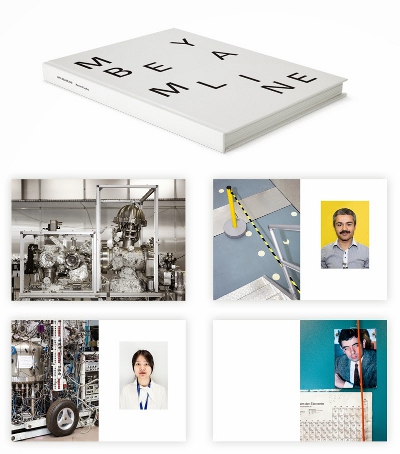MyBeamline: Kevin Fuchs Photographs about BESSY II
An artistic look at technicians and researchers
Kevin Fuchs works as a freelance photographer in Berlin. The 31-year-old Swiss spent a year taking photographs at Helmholtz-Zentrum Berlin. The pictures make up the final project of his photography studies at the Ostkreuz School of Photography.
We see aluminium foil, stainless steel, piping and a lot of impromptu material in his pictures: Kevin Fuchs explains in an interview what it’s all about and why, of all things, he chose to photograph a research institute.
Interview with Kevin Fuchs
What made you choose the Helmholtz-Zentrum Berlin as the subject for your final project in your photography studies?
I happened to see some stunning photos of BESSY. I wondered: what kind of a bizarre place is that? I was very curious, and asked the communications department if I could take a visit of BESSY. The HZB was very positive about the project and supported me from the beginning.
What were your thoughts when you first arrived at BESSY?
It was a total sensory overload for me. At first sight, the halls were all chaotic, but also eerily futuristic. It was one huge jumble of cables, but at the same time, everything seemed to have some deeper meaning. The people I saw amongst all the technical equipment in the halls were completely absorbed in their work and engrossed in thought.
How long did it take for you to take all the pictures?
I was actually on site for several months; not every day, of course, but often several times a week. I took photos not only of the storage ring hall of BESSY II, but also of the halls around the research reactor. I needed all this time to get the pictures: I simply hid out in a corner, observing the researchers and discovering new motifs. The shots of people at work are not simulated. I was just in the right place at the right time and kept my camera trained on them. It takes a lot of time, of course, but also a certain confidence. Many of the researchers knew me after a while and weren’t disturbed by my being there.
Taking photos over a half a year must generate countless pictures. Was it difficult selecting the motifs?
That was in fact one of the hardest tasks. I had amassed more than a thousand photographs. So there was a lot of material I had to sift through and assess. But as a photographer, you always want to tell a story. So the choice of motifs, the colouring and the order in which you present the motifs have to form a coherent ensemble. The photo book best reflects this intention.
The portraits always bring out the individual personality; the people seem to be right there and focused. How did you manage to get so close?
Again, I simply took a lot of time. When we start, people often smile crazily into the camera. They’re tense and nervous – and their expression reflects exactly that. But that tends to go away after a few minutes. Then I ask the people to look focused into the camera. Of course, some get used to it more easily than others.
What is your view, as a photographer, of image processing?
My rule is: I allow as much image processing as you could have done in the past during print development in the darkroom. In other words, I work on the brightness and contrast. But I prefer not to make any fundamental modifications to the pictures, such as recolouring.
Do you already have your next project in sight?
Yes. A colleague and I will be photographically documenting the transformation process in Polish cities. Most of the cities in the south of Poland used to have mines in them; the cities and people have gone through enormous change. I am really looking forward to this project.
Is it possible to earn a living with this kind of photography?
For the project in Poland, we have luckily received a scholarship from the Otto-Pfeifer Foundation. Generally, with freelance projects, I also try to make contact with magazines or journals as early as possible and discuss the possibility of paid use of the pictures. But it isn’t easy making your way with your own projects as a freelance photographer. So, naturally, I also happily take on commercial jobs.
Interview by Silvia Zerbe.
Short biography
Kevin Fuchs was born in 1983 in Zug, Switzerland. He studied journalism in Zurich and Berlin, after which he worked for a number of media companies and agencies. From 2011 to 2014, he studied at the Ostkreuz School of Photography. Kevin Fuchs lives in Berlin, where he works as a freelance photographer.
The photo book “My Beamline”
The photo book “My Beamline – A photographic exploration of a place of research” is available from here (price 35 Euro).


